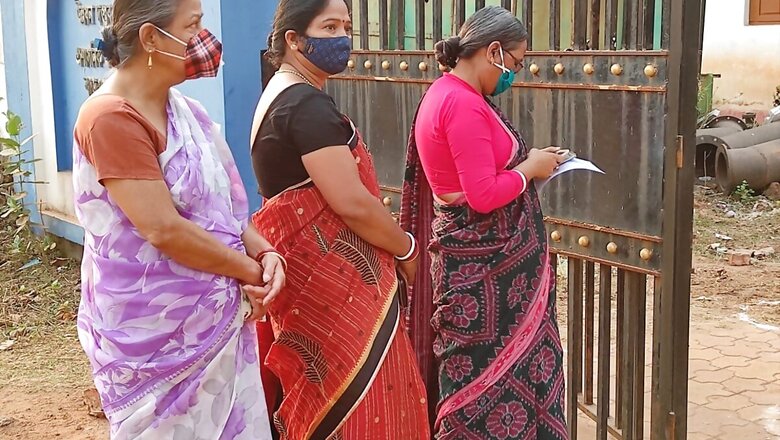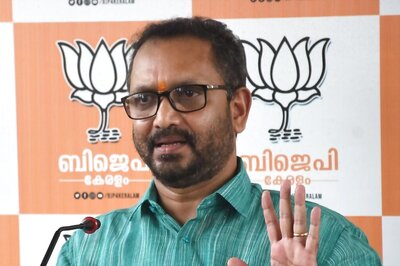
views
While all eyes were on polarisation shaping the outcome of the Bengal elections, a key narrative that has received inadequate attention is the salience of welfare populism. Though populism is a broad distinctive conceptual category to understand political strategy and leadership styles across the political spectrum, the political leadership’s practise of distribution of subsidies, doles and hand-outs of everyday necessity to different sections of people—particularly the lower strata—for electoral benefits is popularly termed as welfare populism or freebie politics. Welfare populism has seen its most dominant and successful manifestations in the politics of Tamil Nadu and Andhra Pradesh under charismatic regional leaders like M.G. Ramachandran, N.T. Rama Rao, M. Karunanidhi, Jayalalithaa; Odisha’s Naveen Patnaik, Bihar’s Nitish Kumar and Delhi’s Arvind Kejriwal also adopted their own variant of populist policies in their states. Mamata Banerjee too has deftly used welfarism to win two back-to-back elections. She is banking on the same to win a third term.
Mamata’s ‘Paternalistic’ Welfarism
If one carefully observes the nature of welfare policies adopted by the Trinamool Congress (TMC) government in Bengal and the language of its distribution, it reflects a paternalistic style of politics of redistribution, very similar to the one practised by Jayalalithaa in Tamil Nadu. The TMC government led by Mamata has adopted a slew of welfare policies encompassing almost every major basic aspect of life ranging from food, shelter, education and health in Bengal, with some of the major ones started in the wake of the health and economic crisis due to the ongoing pandemic. The schemes include cash transfers for assisting farmers, standardisation of all pension schemes, and increase in dearness allowance for West Bengal state government employees. The food security scheme ensures food for the poor and the initiative covers 9.98 crore beneficiaries in Bengal and has served the people during the pandemic.
The TMC government had recently launched “Maa kitchen” on the model of “Amma Canteen” in Tamil Nadu, providing meals to the poor at INR 5. The government gave financial assistance of INR 1,000 each to around 1 lakh migrant workers stranded in other states during the nationwide lockdown last year. Under the rural Housing Scheme, pucca homes have been built by the government for marginalised populations, especially after the devastation caused the cyclone Amphan. Poor households get free electricity till a basic set limit and the scheme covers 35 lakh families.
Similarly, in the field of education, schemes like free school uniforms to more than 8.12 crore school children since 2011 and a grant of INR 10,000 to each student studying in Class XII of government-aided or sponsored schools and madrassahs to purchase tabs or smartphones—for access to online education in light of the pandemic—and scholarships to different students, are the notable ones. Schemes under which students were given bicycles for travelling to school and financial assistance is given to poor girls has been very popular and have had 67,96,966 beneficiaries so far. The scheme for girls to get INR 25,000 for their marriage has over 8,49,138 beneficiaries. There is also unemployment assistance of INR 1500 per month for youth that has served 1,81,477 beneficiaries so far. Health has assumed importance in the TMC government’s welfare policies, especially after the COVID-19 pandemic as five lakh health insurance schemes have been launched for every household in the state along with free “Eye Health for All” covering over eight lakh poor people.
Further, more than one crore minority students have availed State scholarships and free accessories for school. Since 2012, imams and muezzins have been getting monthly allowances and houses in the state and, recently, it has been extended to Brahmin priests and priests of other communities. Last year, the government launched popular schemes to allow for the benefits of the government’s policies to reach right at people’s doorsteps. More than 2.75 crore people attended 32,830 assistance camps organised at the gram panchayat and municipal ward levels across the state for availing various such schemes. All these schemes were announced and implemented in the name of TMC’s leader Mamata Banerjee in the manner of her extending her paternal protection and care to the masses as the ‘guardian’ of the people.
Welfarism Gets Gender Makeover
Widespread delivery of welfare schemes, which have improved the daily lives of the marginalised sections of population have gone on to play a critical role in the ruling TMC’s electoral successes so far. Despite allegations of Sharada and Narada Scam, the TMC reaped electoral dividends in the 2016 assembly elections. As the BJP rose to prominence in the state threatening Mamata’s position since 2019, she has increased the magnitude and reach of her welfare populism to galvanise the support of both the urban and rural poor, which constitutes the majority of the state’s electorate.
Hence, in this election, Mamata Banerjee has constantly showcased her ‘successful’ implementation of welfare schemes as one of her major achievements in governance and has cautioned the electorate that if her government is voted out of power, all the schemes that people have received will be scrapped by the BJP government. She has also projected her welfare populism as a specific means of empowerment of women as many schemes have been directed towards better education and meeting marriage expenses of girls. Moreover, the health scheme has been registered generally in the name of the female member of the family giving a sense of ownership to the women who could manage treatment of her family members by availing the insurance scheme.
BJP’s Competitive Populism
Even in the election manifesto, a slew of other welfare schemes has been promised by the ruling TMC targeting the youth and women voters of the state. A monthly allowance has been promised to all women for meeting their personal expenses, a monthly INR 1000 cash grant for widows and an Rs 10 lakh credit card with low interest has been promised to all students for meeting their higher education expenses.
The BJP, in turn, has promised a slew of populist measures to counter Banerjee’s narrative of welfare populism. The saffron party has promised women 33 percent reservation in government jobs, free health care, free public transport, and a monthly INR 3000 pension for windows, senior citizens and unorganised workers. BJP has also promised in its election manifesto a major grant for every girl child, which is higher than the grants presently given by the ruling party in Bengal. Banerjee has tried to counter the BJP’s promises by positioning her schemes as more effective and having wider reach than the BJP ruled centre’s schemes like the health scheme Ayushman Bharat. This has triggered a politics of competitive welfare populism in Bengal.
Limits of Welfare Populism
Despite Banerjee’s aggressive welfare outreach, allegations of corruption (illegal commission) and selective distribution in the implementation of such schemes are rampant. These issues particularly over money “cuts” or illegal commission have been repeatedly highlighted by the opposition parties, particularly the BJP during the course of election campaigns. Moreover, the loopholes in the welfare distribution mechanism have also taken a communal form (minority appeasement), effectively reverberated by the BJP that Banerjee’s government disproportionately favours minorities in the distribution of welfare schemes.
Also, another glaring limitation of sole use of welfare populism as means of governance without large-scale employment generation is that the aspirational electorate after receiving the basic amenities of welfare would expect long-term economic security in the form of employment. BJP has made “development (vikas)” a major electoral promise that it claims would usher in greater employment opportunities in the state, challenging TMC’s core welfare narrative.
How effective Banerjee’s welfare populism will be in ensuring her electoral victory for the successive third time in the state will be known on May 2, when the election results are announced. However, what one can argue with some certainty is that the idiom of welfare and the practise of welfare populism have once again been catapulted to the centre of the political narrative in the run up to the Bengal elections and might have some implications for India’s evolving political discourse.
This article was first published on ORF.
Read all the Latest News, Breaking News and Coronavirus News here. Follow us on Facebook, Twitter and Telegram.
















Comments
0 comment